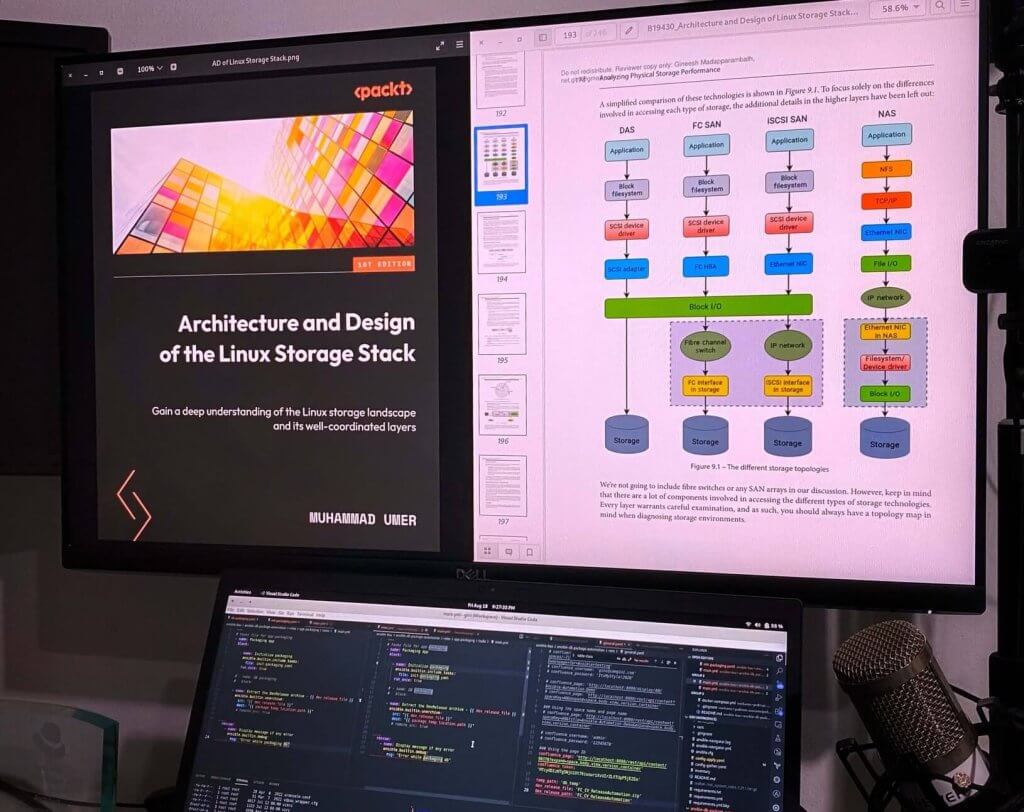
Book Review: “Architecture and Design of Linux Storage Stack”
Author: Muhammad Umer
Reviewed by: Pradeep Roy Kandru
I’ve just wrapped up exploring the pages of “Architecture and Design of Linux Storage Stack” by Muhammad Umer, and boy, do I have some thoughts to share!
Let’s dive right in. First things first, this book was an eye-opener for me when it comes to storage concepts. Honestly, I had been riding the surface-level waves for years, but this book took me on a deep-dive journey, and I’m incredibly thankful to the author for it.
Starting things off, the book sets the stage with a hearty introduction to virtual filesystems. It’s like a backstage pass to understanding the intricate web of system calls that power things behind the scenes.
As you flip through, you’re treated to a gradual unveiling of the filesystem’s backend magic – pointers, files, directories, and all that jazz. Who knew there was so much happening under the hood?
Now, here’s the cool part. Ever wondered how NFS, FUSE, or Device Mapper do their thing? Well, wonder no more. The author goes the extra mile to break down these concepts and unveil the inner workings. It’s like being handed a decoder to the tech secrets.
A personal favourite was the chapter that spills the beans on SCSI and its intricate layers. The author brilliantly uses diagrams and nifty SCSI utility snippets to serve up a clear understanding – no fancy jargon required.
But that’s not all. Brace yourself for a treasure trove of storage management and analytics utilities. Trust me, these are going to be your go-tos for tackling storage-related puzzles.
And then, there’s the cherry on top – a chapter dedicated to fine-tuning the I/O stack. With samples and in-depth details, it’s like having a storage sensei guiding you.
Hats off to Muhammad Umer for crafting a book that shines a spotlight on Linux storage architecture. It’s a testament to his expertise and dedication.
Special thanks go to LMarylou De Mello from Packt for making sure this literary gem landed in my hands. If you’re curious and itching to grab your copy, check it out right here: Book Link.
Disclaimer:
The views expressed and the content shared in all published articles on this website are solely those of the respective authors, and they do not necessarily reflect the views of the author’s employer or the techbeatly platform. We strive to ensure the accuracy and validity of the content published on our website. However, we cannot guarantee the absolute correctness or completeness of the information provided. It is the responsibility of the readers and users of this website to verify the accuracy and appropriateness of any information or opinions expressed within the articles. If you come across any content that you believe to be incorrect or invalid, please contact us immediately so that we can address the issue promptly.
Tags:
Comments







Leave a Reply